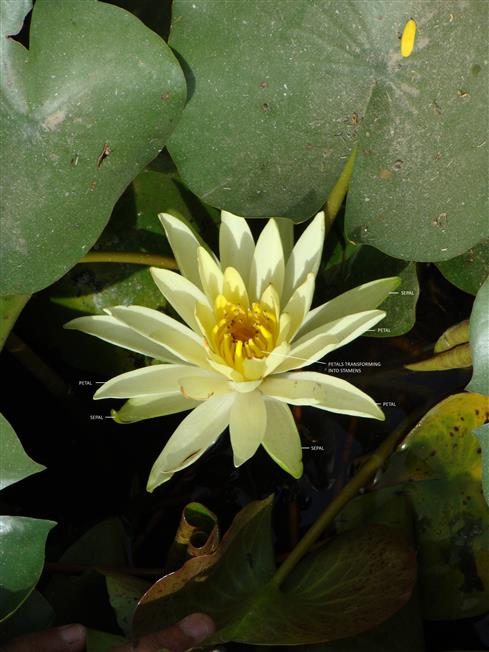NYMPHACEAE
Aquatic perennial herb. Stem rhizomatous, branched or unbranched, rooted in mud at the bottom of ponds and lakes, vegetative parts often with air cavities. Leaves arising from rhizome, alternate, simple; petiole long; leaf blade floating, simple, undivided but often with basal sinus, cordate, peltate, linear to orbicular with sagittate to cordate base. Flowers solitary, axillary, long pedicelled, bisexual, hypogynous to epigynous, actinomorphic, mostly emergent. Sepals 4-7, usually 4, usually green, occasionally petaloid. Petals many free, usually showy, often transforming into staminodes and stamens. Stamens many, free or adnate to petals, anthers introrse, dehiscence longitudinal, connective appendaged or not. Pistil 1, compound, carpels 5 to many, partially or completely fused, ovary superior to subinferior, many locular, loculi as many as carpels; stigmas separate or united into disc with radiating rays. Fruit a many-seeded berry, irregularly dehiscent. Seeds with or without aril.
5 genera and 90 species
